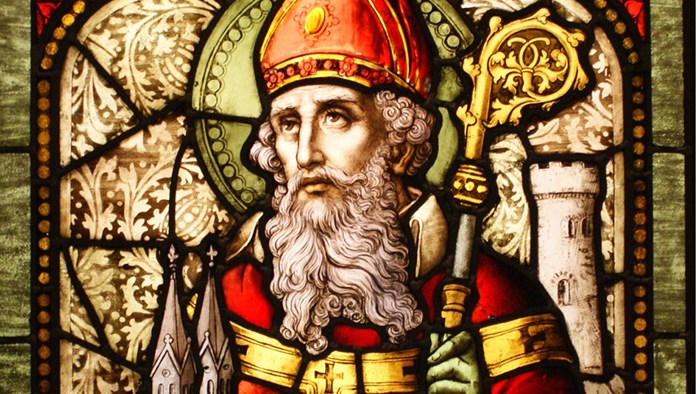Happy St. Patrick’s Day
May the Irish hills caress you. May her lakes and rivers bless you. May the luck of the Irish enfold you. May the blessings of Saint Patrick behold you.

St. Patrick’s Day is a significant day for our family. March 17 is my Mother’s birthday. Mom passed away in 2014 at the age of 89. My second child, Julianna, was also born on March 17 and as a result was named after my mother, Julia and my great grandmother, Anna. Though we are not Irish, Julianna feels like she is Irish by having this very special birthday date.

Tonight we will take her out to dinner to celebrate and then come home and have dessert. Julianna wanted me to make a Brooklyn Blackout Cake from my FAVORITE cake cookbook, Layered by Tessa Huff. My son, Benjamin and I made this cake last summer and it was a big hit. I will be assembling this cake later today so these photos were from the last time we made this cake. Please forgive the clarity of the photography, but I wanted you to see this cake.

This decadent chocolate cake, was named after blackout drills during WW II. It was developed by Ebinger’s Bakery and was a staple for Brooklyn for many decades. Unfortunately the bakery went bankrupt in 1972 and though many have tried to replicate it, apparently nothing can compare to the original.

This devil’s food cake is layered with chocolate custard and then the cake is covered in more cake crumbs. It is DELICIOUS and will be the perfect birthday cake for my sweet daughter.
As you know, I am always so curious as to why we celebrate and recognize certain holidays.
So who is Saint Patrick and why do we celebrate March 17th?

Saint Patrick was a fifth-century Romano-British Christian missionary and bishop in Ireland. Known as the “Apostle of Ireland”, he is the primary patron saint of Ireland, along with saints Brigit of Kildare and Columba. However, St. Patrick was born in Scotland but devoted his life to missionary work in Ireland.
First, a few misconceptions about Patrick:
Patrick isn’t really a Saint with a capital S, having never been officially canonized by Rome. And Patrick couldn’t have driven the snakes out of Ireland because there were never any snakes there to begin with.
The modest observance of St. Patrick’s Day in Ireland dates back to the 17th century, as a religious feast day that commemorates the death of St. Patrick which was on March 17, 461 AD. Patrick is credited with having brought Christianity to Ireland, and as such became a figure of national devotion and, in due course, the nation’s patron saint. The day’s importance was confirmed in 1631 when it was recognized by the Vatican.
The first recorded celebration of St. Patrick’s Day was in 1737 in Boston, held by the Charitable Irish Society of Boston to assist Irish immigrants in finding jobs and homes.
The day grew in significance following the end of the Civil War and the arrival, across the 19th century, of ever increasing numbers of Irish immigrants. In essence, St. Patrick’s Day was a public declaration of a hybrid identity—a belief in the future of Ireland as a nation free from British rule, and a strict adherence to the values and liberties that the U.S. offered.
The tradition of celebrating St. Patrick’s Day grew across the U.S. and became a day that was also celebrated by people with no Irish heritage. Corned beef and cabbage—rarely eaten in Ireland but commonplace in American cities as a springtime dish—became the meal for March 17.

The power of St. Patrick’s Day in the U.S. was its ability to survive and then spread. It survived over the decades because generations of Irish immigrants were eager to celebrate their origins.
So, wherever you may be on this day, raise a glass to toast not only good old Ireland, but America’s interpretation of it as well.
Happy 20th Birthday, Julianna! Miss you, Mom….
![]()